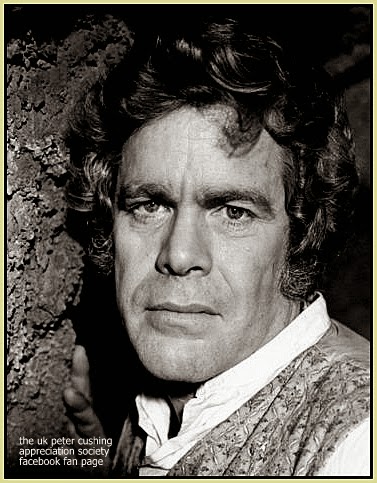BAHAMIAN BORN, Bert Cooper... soon to be Calvin Lockhart first caught
many movie-goers' attention in those now ' a little off centre' maybe,
super-slick cliche urban films like Cotton Comes to Harlem (1970) and
Halls of Anger (1970) before becoming a fairly steady fixture in the
"blaxploitation" movies of the early-to-mid 1970s. It was what it was...
Most serious film and TV roles for black actors were scarce at that
time, so Calvin moved from the US to Europe.
OUR PCASUK feature and gallery on 'The Beast Must Die' (1974) starring Calvin Lockhart, Peter Cushing and Marlene Clark, can be FOUND RIGHT HERE!
GIF ABOVE: BOO! Paul Foote and Newcliffe, play 'a-hunting' in the forest in 'The Beast Must Die' (1974)
ABOVE: MARLENE CLARK as Caroline Newcliffe in 'The Beast Must Die'
IN ITALY Lockhart soon owned a restaurant and formed his own theatre
company, serving as both actor and director. For a time, he also lived
in Germany before settling in England, where he became the first black
actor to play lead roles with the Royal Shakespeare Company. Soon he was
starting to build up film credits with minor work in such British
movies as A Dandy in Aspic (1968) and Only When I Larf (1968). He made
news in another racially-motivated project entitled Joanna (1968), which
centred around a "mod", interracial romance with 'Genevieve Waite'.
GIF ABOVE: Dr. Lundgren (Peter Cushing) offers to treat Newcliffe's (Calvin Lockhart) dog, 'slight flesh wound' . . that turns out to be much more . . !
IT WAS 1974 when Milton Subotsky, producer and scriptwriter at Amicus
films spotted him for the lead role, in a little something different
from their portmanteau movies, a wolf-wolf who-done-it . . with a
little, if not a wonky nod to the blaxploitation films of Lockhart's
past...what resulted for some is one of their Peter Cushing favourites,
Cushing playing German (?) Swiss (??) lycanthropy expert in 'The Beast
Must Die' famous also for it's 'werewolf-break' the film is a hoot, and
like many other Amicus films, has a great cast with Michael Gambon,
Anton Diffring, Charles Gray and the lovely, Marlene Clark.



AFTER 'BEAST', Calvin's career grew a little lacklustre, and by the end
of the decade, he was resorting to trivial guest parts in such TV shows
as Good Times (1974) and Get Christie Love! (1974). He landed a
recurring role on the night-time soap Dynasty (1981) In 1974, Calvin
married a woman also from the West Indies and had three children! After
his career subsided, he decided to return to his homeland in the mid
'90s and resettled in Nassau with his fourth wife, Jennifer Miles. There he involved himself with the Freeport Players Guild as a director.
He also returned to films after a 15-year absence, completing Rain
(2008), a movie shot in the Bahamas, shortly before he suffered a major
stroke.

SADLY CALVIN died of complications on March 29, 2007, and his family are
currently in the process of establishing a scholarship fund in his name,
specifically for Bahamian students, pursuing an acting or film making
career. Today we remember
Lockhart, who put more than a bit of a buzz into a Amicus film. Calvin
Lockhart : October 18, 1934 - March 29, 2007
Banner stills:
Top Right: Peter Cushing and Calvin Lockhart in 'The Beast Must Die' (Amicus 1974)
Bottom Right: Rare promo portrait still for 'The Beast Must Die', featuring Calvin Lockhart and co star, Marlene Clark.
Main Still: Rare publicity portrait of Calvin Lockhart as Tom Newcliffe.
'The Beast Must Die' (1974 Amicus films) Directed by Paul Annett































































